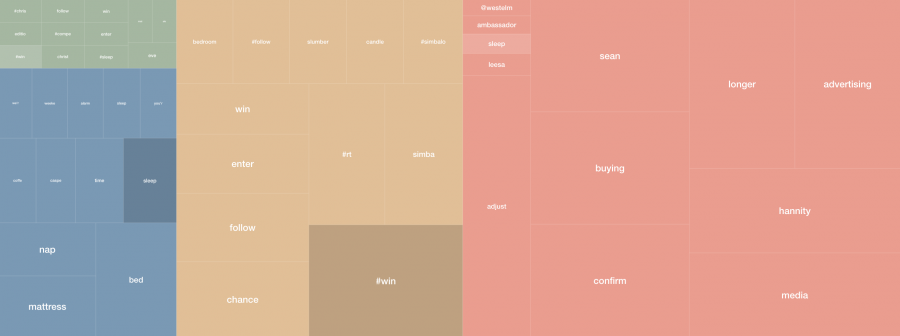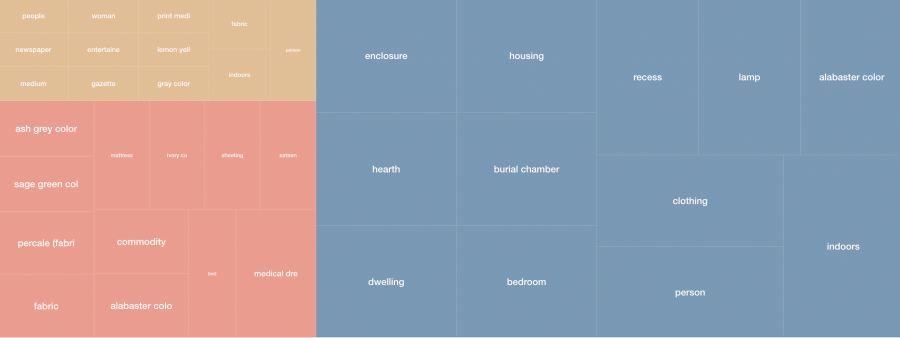How mattress companies should use social data and behavioral insights to get more people into bed
Made a resolution to get to bed earlier this year? You're not alone - sleep is set to be a big lifestyle topic for 2018. Yes, you heard us right, sleep. With blue-light emitting screens and busier-than-ever lifestyles destroying the quality of our shut-eye, ‘clean sleeping’ is fast becoming the new clean eating (thanks to, of course, Goop), and ‘sleep vacations' are the latest type of holiday, a kind of detox for the sleep-deprived.
Taking a quick look at Google searches, sleep has slowly been trending upwards over the last few years, with spikes every New Year as everybody resolves to sleep better. So how can we actually do that?
Enter the mattress-in-a-box
The tools we use for getting a decent night’s sleep are undergoing a rebranding. We’ve recently never heard, or seen, so much about mattresses. Our beds are the latest source of tech disruption - new technology has unleashed a series of online purchased mattresses that can be vacuum-packed into a box, making them easy to deliver, quick to assemble, and, the companies say, the most comfortable sleep ever.
The companies selling them are dominating the millennial advertising space of podcasts, as well as using paid search and retargeting almost to a point of becoming oversaturated online.
I went on 1 mattress website, and now my entire online life is plastered in mattress adverts.
— Scott Robertson (@scottymeuk) September 8, 2017
Wow, the mattress market must've been incredibly slow until podcasts started and they finally found somewhere to put adverts.
— Martin Stiff (@martinstiff) December 5, 2017
Since we ordered a new mattress last week, my Twitter timeline has been flooded with adverts for them. YOU’RE TOO LATE, TWITTER!
— Miles with Michelle (@mileswithshell) December 28, 2017
But with so much choice, how can a humble mattress stand out from the (sleepy) crowd? Dr Jillian Ney suggests some tips on how to use behavioral science to improve mattress marketing in a new ebook, The Ultimate Guide to Using Behavioural Insights to Sell Innovation: The case of a Mattress-in-a-Box.
Dr Jillian is an expert in social media and behavioral science - and the UK’s first doctor of social media. She analyzes social data to find out how people make decisions, helping clients to understand customer behavior. In this book, she looks at the data around mattresses-in-a-box companies to exemplify the six important questions brands should be asking to increase conversion rate optimization.
Decisions, decisions...
To understand decision making, we must first understand our brains. If we look at the different 'types', or levels, of the brain as defined by Paul D MacLean, they break down into:
- the reptilian brain: our primal responses, mainly controlled by fear
- the emotional brain: our moods and hormonal responses
- the executive brain: the rational part of ourselves, controlled by logic
You would think that decisions are made by the executive brain, but this is actually not true. There are six stimuli, including selfish desire, contrasts, emotion provoking, visual benefits, tangible benefits, and beginnings and endings, that encourage us to make a decision.
Using your executive brain takes energy, so the brain is hardwired to create shortcuts to conserve energy. Dr Jillian tells us “when things are too complex, the non-conscious brain takes over”. Therefore to remove barriers to complex decisions like making a purchase, we need to understand the shortcuts people take. “When communication matches what we believe it will be easier to pass through the non-conscious [blockers]... into active processing.” Good communications have a strong link to the rational or emotional sensation businesses want to be associated with.
Dr Jillian’s research looked at over 20,000 mentions of 20 globally leading mattress-in-a-box companies across Twitter, Facebook, Instagram and review sites using leading social listening technology, and distilled these into 7,800 usable pieces of data.
From this data, she was able to answer her six questions that give insight to customer behavior for conversion rate optimisation. We’ve detailed three examples below:
What is the psychological reason for this purchase?
You would think this would be ‘comfort’ for mattresses, but social conversation suggests that people have varying desires between a comfortable and a ‘firm’ mattress. It’s a “good night’s sleep” that people are really searching for - which obviously is something comfort leads to.
Looking at four leading brands’ Twitter accounts - Simba, Casper, Eve and Leesa - key terms like 'sleep', 'asleep', 'slumber', '#sleep' and Eve’s own hashtag of #sleeprich were consistently amongst the words that got the brands highest engagement during 2017 (although interestingly the most engagement of all came from Leesa’s decision to drop their ads from Fox News presenter Sean Hannity’s shows, after he endorsed a controversial conspiracy theory).
What are the intrinsic and extrinsic purchase drivers?
These are reasons that the selfish side of our brain - the reptilian and emotional sides - control. The research showed that key reasons people talk about buying a new mattress include pain, usually back pain - the main driver to prompt someone to look for a new mattress - and moving house. The companies Dr Jillian looked into aren’t appealing to the selfish brain with the images they’re using, nor specifically pointing out that they solve these problems - none of these words appear in their most engaged tweets.
When we looked at our brands’ Instagram accounts using Pulsar CORE’s image analysis (below), the images that drew most engagement were often categorized as 'indoors', and using muted colours like alabaster, gray and ivory, implying a sense of calm is what people will associate with a mattress company, wanting to be soothed from pain, and settled in a new space.
What is the customer’s anchor?
The anchor is a psychological term to describe how the brain tends to hang off one trait or specific piece of information when making decisions about a topic. In the case of mattresses-in-a-box, Dr Jillian found that this is a comparison to the customer’s current or old mattress - the only thing they have direct experience of.
Dr Jillian says “Remember the biggest reason for a new mattress purchase is pain – pain in the upper back, lower back and hips to be exact. By using language and symbolism in marketing that contrasts between the pain (primary purchase driver) and the tangible benefits of the new mattress-in-a-box the communication is optimised for the reptilian brain.”
Getting more people into bed
Dr Jillian concludes her book with some tips for how the mattress-in-a-box companies could optimize. We won’t give away the ending, but one key point is that no brand is standing out as entirely unique. They are positioning themselves as innovative tech companies, rather than an integral part of offline life, appealing to their investors rather than their customers. Although ramping up the marketing has been the norm for these brands, many ads simply aren’t appealing to the lifestyle side of the trend, with images showing the mattresses themselves, rather than a mattress in situ, appealing to the executive brain before getting the reptilian brain hooked.
Hopefully, if sleep is to be a lifestyle ‘trend’ this year (if an essential part of sustaining life can be counted as a trend), the mattress companies will take heed of some of these messages, and the mattress ad nightmares will cease, letting us all get a good night’s sleep.
To read more about the mattress-in-a-box, download Dr Jillian's full ebook The Ultimate Guide to Using Behavioural Insights to Sell Innovation: The case of a Mattress-in-a-Box for free here


